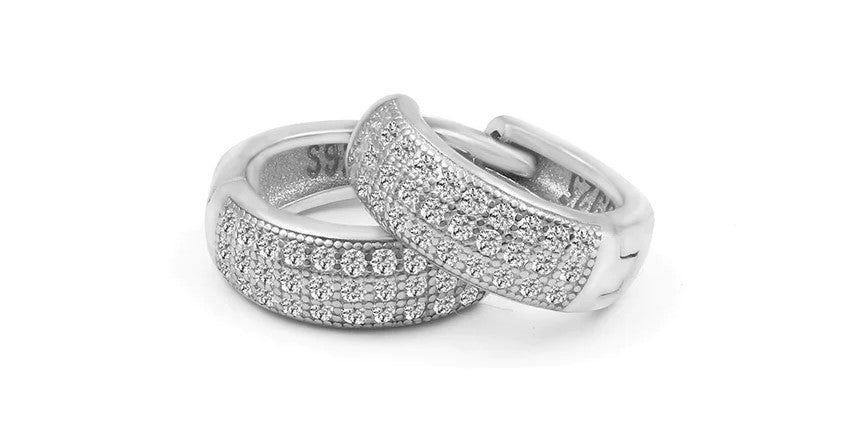The History of Sterling Silver Jewellery
Posted by ZARKAN JEWELLERY

Sterling silver has been used to create beautiful and timeless jewellery for centuries. The history of sterling silver jewellery is fascinating and spans cultures, continents and time periods. In this blog post, we will explore the history of sterling silver jewellery, from its origins to its enduring popularity today.
Origin
Sterling silver is an alloy made of 92.5% silver and 7.5% copper or other metals. The addition of copper gives the silver strength and durability, while still maintaining its beautiful shine and lustre. The term "sterling" was first used in England in the 12th century to describe a standard of purity for silver. Sterling silver became widely used in Europe during the 14th and 15th centuries, and it was a popular material for jewellery and other decorative objects.
One of the earliest examples of sterling silver jewellery is the treasure of Sutton Hoo, a burial site in England that dates back to the 7th century. The treasure includes a silver buckle, a silver belt plate and a silver spoon, all made of sterling silver. The intricate designs and craftsmanship of these objects show that even in ancient times, sterling silver was prized for its beauty and elegance.
Renaissance
During the Renaissance, sterling silver jewellery became even more popular, especially in Italy and Spain. Italian goldsmiths created stunning pieces that were decorated with intricate filigree work, gemstones, and enamels. These pieces were often commissioned by wealthy patrons and were considered status symbols.
Hallmark System
In the 18th and 19th centuries, sterling silver jewellery continued to be popular, especially in England and the United States. Silver was more affordable than gold, and many people could afford to buy and wear sterling silver jewellery. English silver was especially prized for its high quality and craftsmanship, and the hallmark system was established to ensure that all silver produced in England met certain standards of purity.
Innovation Continued
During the Art Nouveau period in the late 19th and early 20th centuries, sterling silver jewellery was used to create some of the most beautiful and innovative designs of the time. Art Nouveau jewellery was inspired by nature and featured flowing, organic forms and intricate details. The use of sterling silver allowed jewellers to create intricate designs that were both beautiful and durable.
In the 20th century, sterling silver jewellery continued to be popular, especially among artists and designers who were inspired by the Art Deco and Modernist movements. These designers created bold, geometric pieces that were often decorated with gemstones or enamel. Sterling silver was also used to create costume jewellery, which allowed people to wear fashionable pieces at an affordable price.
Present Day
Today, sterling silver jewellery remains as popular as ever. It is a versatile material that can be used to create a wide range of designs, from classic to modern. Sterling silver is often used in wedding rings and other special occasion jewellery, but it is also popular for everyday wear. Many people prefer sterling silver to other metals because it is hypoallergenic and does not tarnish easily.
Conclusion
In conclusion, the history of sterling silver jewellery spans centuries and has been influenced by many different cultures and time periods. From ancient times to the present day, sterling silver has been prized for its beauty, durability, and versatility. Whether you prefer classic or modern designs, sterling silver jewellery is sure to add a touch of elegance and sophistication to any outfit.

